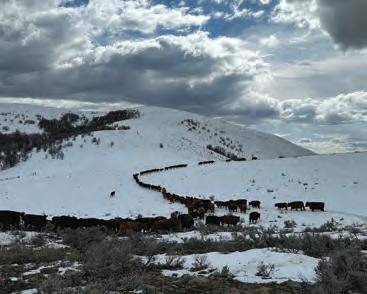




We would like to thank everyone that has supported our bull sale over the years. This year marks our 20th year in the seedstock business. We have made many friends in the cattle and livestock industry. We take the confidence you have placed in us to improve your bottom line very seriously. Like our operation, you rely on the livestock to support your families and pay your bills. It is so neat to see the loyalty, recognition and approval of our bulls by the ranches that stock them. Some of you have bought bulls since day one and we sure appreciate it.
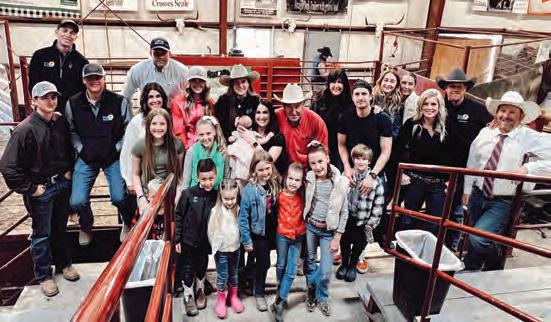
We are very proud of our heritage and the previous generations that have done so much for us. They have helped pave the way and provide a way of life that we love so much. Our father, Jeff Roche, had the idea to purchase the ranch that he was raised on and the place his father managed for 40+ years. Justin and Dusty were barely double digits in age and the year was 1992. We were all excited because it was bordered by the property that our grandparents, Doug and Doris Roche, had purchased from Grandma’s dad, Job Hadfield. The year we bought the ranch calves were in the high seventies, lambs in the high forties, wheat was at $3 and interest rates on loans were 10%-plus. Somehow, we have managed to make it so far! When we started on our own, we purchased 100 head of cattle from Holmgren Conner Cattle Ranch and 250 head of old ewes from our great-grandpa, Nick Chournos.
Currently, we run 1,500 head of cow/calf pairs and 5,000 head of sheep. We haven't been convicted of being the smartest, but we do know how to run and make a ranch work. We have taken the same approach to our bull program. We continue to improve the quality every year and this is our best offering yet. We say that every year, so it’s a good thing! These cattle know how to get out and work and will produce a profit for you in a commercial environment. They have to or to make a ranch work.
We believe the best way to stay profitable is to take advantage of crossbreeding, especially maternal heterosis, and quality research proves that. Maternal heterosis is the most valuable tool available to improve cow performance and herd profitability. With the low inheritability of maternal traits, like fertility and longevity, a breeder can spend a lifetime trying to make the same progress for those crucial traits that can be realized in one easy cross. Studies show an equivalent of 1 to 1.5 extra calves over the lifetime of a female in favor of crossbred cattle because of the combination of greater longevity and extra calf weaning weight. If we could purchase a pharmaceutical that added that much performance and profit there is little doubt that producers would stand in line all day to buy some.
We would like to thank our employees, friends and family that make this all possible. Without them, we have no business. We welcome you to the sale and want you to know that we stand behind these bulls 100%. If for any reason you’re not completely satisfied, we will make it right.
Sincerely,
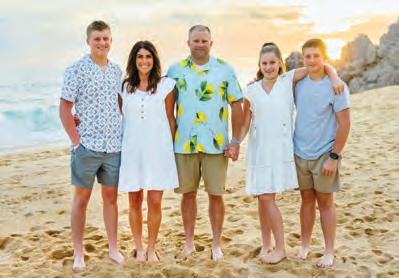

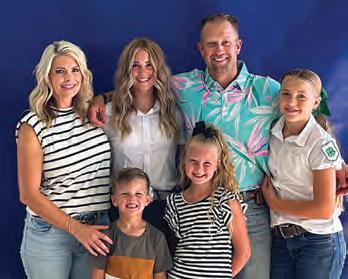
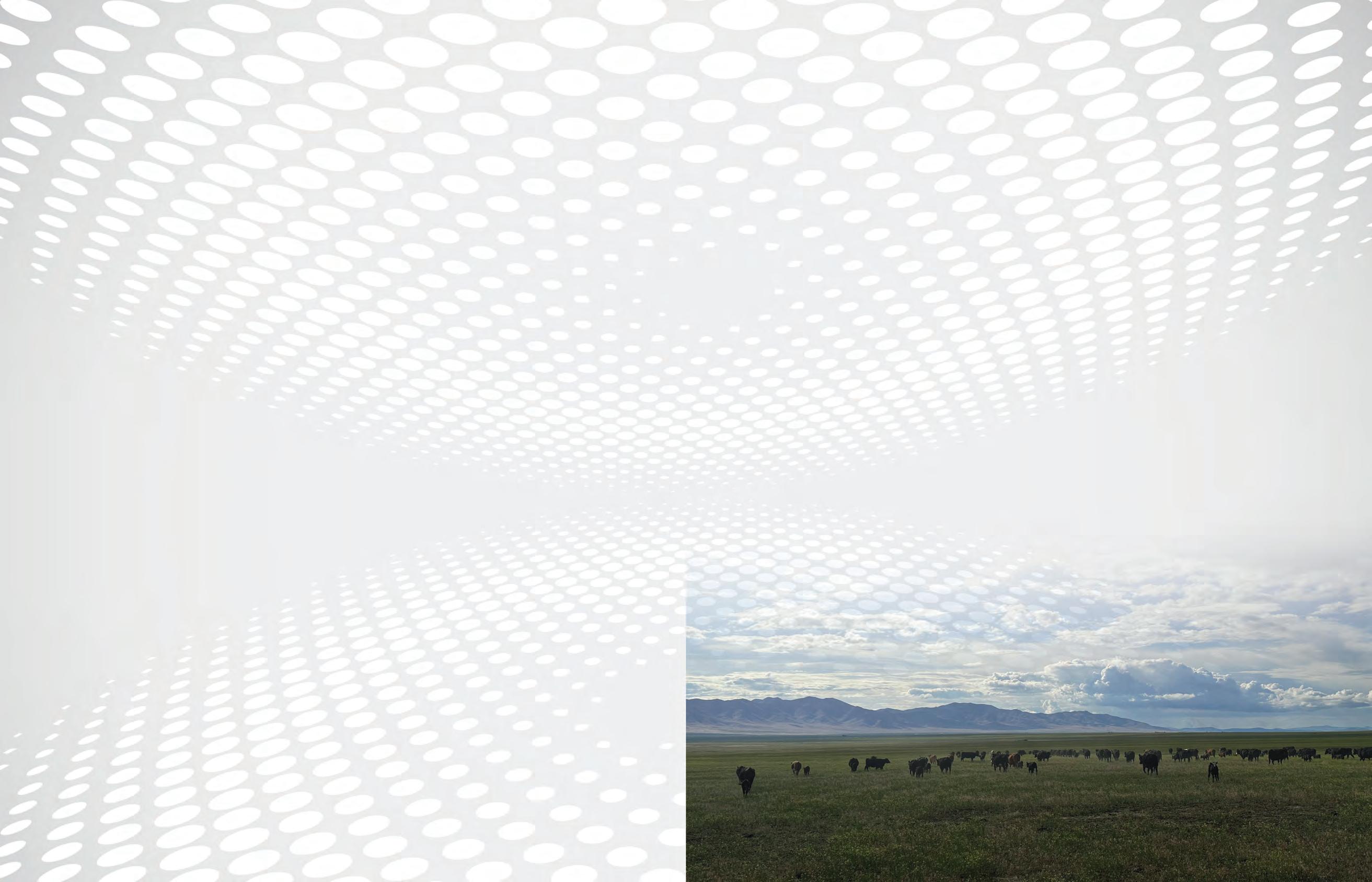
Terms of this sale are cash or check unless arrangements are made prior to the sale. Settlement to be made immediately at the conclusion of the sale before animals are loaded. The right of property title shall not pass until checks have cleared.
All animals will sell as single lots to the highest bidder. Any disputes or challenges regarding bids will be settled by the auctioneer, whose decision will be final.
All animals are at the owner's risk prior to the sale and become the property of the buyer as soon as the animal is declared sold by the auctioneer. At that time, the buyer assumes all risk.
Announcements from the auction block will take precedence over any printed matter and any other announcements.
Although incidents at livestock sales seldom occur, everyone attending this sale does so at their own risk. The owners and employees assume no liability, legal or otherwise, in the event of an accident, bodily injury, theft, act of God, errors in catalogs or omissions, or percentage verification. We try to keep the most accurate records possible and have bull-tight fences, but on a rare occasion, accidents of breeding occur that we are not aware of or cannot control. We will do everything we can to determine the correct percentage, but cannot guarantee it.
We are celebrating our 20th Annual Bull Sale and want to thank you, our customers, by offering 20% OFF YOUR PURCHASE OF YOUR SECOND AND THIRD LOT PURCHASES!
If you are unable to attend the sale but would like to big on the lots offered we encourage you to call prior to sale day. Bids will be handled with the strictest of confidentiality.
All trucking is the responsibility of the buyer, but we will help make arrangements. Every effort will be made to minimize costs to the buyer. We will deliver the bulls to a central location for free.
Every bull has been tested for Tric and semen evaluated by a licensed veterinarian. We will guarantee the bull selling in this sale to be fertile at the time of sale.
Every bull in this sale, to the best of our knowledge, is free of any disease and will be eligible for interstate transport. All bulls were Dextomax treated. They have been vaccinated twice for IBR, P13, BVD, BRSV, 8-way Blackleg, One Shot Pasturella, plus Enforce.
The above Terms and Conditions of this sale shall constitute a contract between buyer and seller and be equally binding on both. Animals that are resold following the sale shall constitute a separate transaction and the rights and obligations of the two parties connected thereto are not covered by these Terms and Conditions.


We hope 2023 was a good year. We are humble and grateful for the 20 years most of you have supported us in the seed stock business. We are very optimistic and excited for 2024. Just wanted to share a few thoughts and ideas that I have come across that I think will help us all be better stockmen and more profitable in our individual operations. Keep this thought in mind as I share a few of these ideas: “If all you are trying to do is essentially the same thing as everyone else, then its unlikely you will be very successful.”
Just a few thoughts on crossbreeding, crossbreeding maximizes production traits, and cuts costs. One of the most tried-and-true principles to maximize production traits while simultaneously reducing costs in commercial beef systems is crossbreeding. Crossbreeding gives commercial beef systems two primary benefits: heterosis (hybrid vigor) and breed complementarity. Lowly heritable traits like reproduction, health and cow longevity are best improved by crossbreeding. Leaving hybrid vigor on the table in a commercial herd is “a big loss.”
Crossbred cows and maternal heterosis is a key to profitability on commercial cow/calf operations. Studies have shown net profit per cow is increased by $75/cow/year because of, maternal heterosis. Ranchers would be wise to crossbreed even if heterosis was zero, due to the complementary effects of matching strengths of one breed to offset weaknesses of another breed.
Maternal heterosis accounts for about two-thirds of the total crossbreeding advantage. Maternal heterosis has more impact because of the effect on reproductive performance through earlier puberty, higher conception rate, faster breed back, greater longevity and the maternal impact on calf performance. Individual heterosis generally accounts for the other one-third of the potential 25 percent increase in lifetime productivity and is realized due to early vigor resulting in more live calves plus greater early calf growth rate.
Acknowledging that it is important to keep uniformity in the cow herd for a variety of reasons-and that some cowmen worry about keeping uniformity in the herd when crossbreeding. One way to keep uniformity in the cow herd is to use bulls of similar frame score. With a strong relationship between frame score and mature size, minimizing differences in frame scores of bulls used to produce females will help maintain cow herd uniformity. Capturing the benefits of heterosis allows producers to optimize genetic progress in economically important traits, especially those associated with reproductive efficiency and maternal performance.
I would also like to say, that we need to stop putting so much emphasis on weaning weight and focus more on price/per head. Here’s what I mean: we shipped 380 head of #605 weight steers@1.50 per lb.= 908.00 per hd. We also shipped 100 head #410 weight steers@2.21 per lb.=906.00 per hd. The difference on weaning weight was almost 200lbs., but price per head was virtually none existent. The point I’m trying to make is; there are ways to reduce inputs. For example, moving calving to March-May to avoid problems with weather, scours, increased labor, and feed. By doing this we will see a drop in weaning weights, but we will be more profitable overall because of the decrease in inputs. Focusing on price per head versus weaning weight, I believe is the way we should be looking at things. I’ve been selling cattle for 19 years and I’ve seen time and time again #400 weight cattle bring as much or more per head than there #600 weight counterparts There’s nothing prettier than seeing several hundred head of 600lb steers coming down the alley way. Unfortunately, all our banker cares about is PROFIT which equals subtracting our expense from our income.
I’m sure God’s original cow was very efficient at converting low quality forages into milk and meat. Because of her unique four-stomach digestive system, she was able to eat and digest plants that could not be utilized by man or most other animals. I don’t know what color she was, and I don’t know what shape or size she was, but I do know she had the genetic ability to adapt to many different environments.
Over the years, man was successful in populating most of the earth with God’s original cow. When placed in a new environment, these cows were able to adapt and change by “natural” selection into the most efficient animal for their new surroundings. Those that could not adapt did not survive.
Man, in all his wisdom eventually realized he could create the cow of his dreams through “artificial” selection. Color, size and shape suddenly became more important than efficiency and adaptability. Right from the start, different men had different ideas about what the perfect cow should look like. These men became the original seedstock producers- and the race was on to create the perfect breed.
Many breeders, to preserve the traits, they deemed to be most important, found it necessary to artificially change the cow’s environment. They did this by providing the cow with extra feed and care. She was no longer required to survive strictly on the forage resources found within her environment. Man, finally succeeded in producing cows with the preferred color, size and shape- but they were not as efficient or as profitable as their ancestors had been.
To be more profitable, we need to get back to basics. We need to produce cows that fit our environment, instead of artificially changing the environment to fit our cows. Cows must be environmentally adapted to efficiently convert available resources into beef, with a minimum amount of inputs. Profit is measured by subtracting our expenses from our income, it is affected very little by color and/or breed of our cattle.
Our goal at Roche Ranches is to identify and produce seedstock animals that can produce and reproduce with minimum inputs- in many different environments. We believe a cow ought to be supporting the ranch, instead of being supported by the ranch. Maybe Chip Hines said it best, “Your cows don’t care if you’re profitable or not. If you’re willing to do the work for them they’ll let you.” Our cows run on short native grass year-round with essentially no hay or supplements. We let the environment sort out the good ones. Suppose you could turn your entire cowherd loose in the wild with absolutely no human contact for 50 years. What do you think the survivors would look like?
We look forward to seeing you Saturday, April 13th @ 3pm Anderson Livestock Auction in Willard, Utah, for our 20th annual livestock sale!
For catalog or general questions call or email: JustinRoche@RocheRanches.com or (435) 327-1842
Jeffrey,

“For the commercial cattleman, it has been determined that the reproductive traits are five times more important than growth traits and ten times more important than carcass traits.” (Brinks, et l., 1983b) For the cow producer...this has not changed!
Yearly cow cost is more important than cattle prices. Cattle prices are a moving value. Cow costs are a stable target with known properties. At the present time there is a wide range of cow costs across the country. What factors are involved in cow costs? Land costs, environmental conditions, land taxes, amount of precipitation, hay feeding, land type, private lease, Forest Service or BLM permits, depreciating equipment, and last but not least is management. Yes, management is the actual determiner of cow costs within a common range of environmental conditions. Two ranches located next to each other may have large differences in cow costs that can be related only to management and nothing else.
Average cow costs are now rising above the $700 to $800 mark. (How high is above average?) If this was lowered to $500, how much could you stick in your pocket? Two hundred per cow x number of cows run on the ranch will get your attention. One known instance in a good environment is crowding $400. How many more could do this? Shaving $200 would be the easiest money you ever made.
Management is the key, available to anyone with incentive to move out of the status quo rut. Doing the same thing year after year with no improvement in profitability has to change. It’s up to you. Management is the process of evaluating each segment of an operation and applying different procedures than what has been followed.
The slow increase in cow size has reduced profit per acre while lessening the efficiency of her internal systems. The amount of forage required to run 100 head of 1,400-pound, heavy milking cows is sufficient to run 137 1,000-pound, low milk production cows. More calves worth more per pound. Can you find anything wrong with that? Oh, yeah, you are worried that the feedlots and packers will not like your smaller calves. It is time to take care of you instead of subsidizing the feedlot and packer.
We have appreciated doing business with our friends and neighbors for over 20 years. We have a great set of bulls that will go to work for you. We look forward to seeing you on sale day.
Sale will be broadcast live on Bid.SuperiorLivestock.com

Cow Info:
We will be offering 40-50 head of 3-4-year-old cows, many pairs and heavy breds. All of these cows will be breed by Roche Ranches herd bulls and a select few AI bred to ABS standout True North, who is a SAV Rainfall son and a purebred Angus. These cows are for sale, based solely on frame size, they are a tick large for our operation, they will mature into 1,300-1,400 lb. cows. They have foraged the majority of their lives and have been fed very few times. These cattle know how to range out, and make a living with what your range will provide. They have learned to use snow for water in the winter, and they know how to work in short grass and graze brush. The pairs will have matching tag numbers with dams and calves will be slick and nonvaccinated. Bred cows will be confirmed pregnant by Dr. Ira Mickelsen, and will sell in groups according pregnancy status. All cows will be poured and will have received a modified live Vibrio/ Lepto shot and 8-way. Bid confidently on a really nice set of cows that have their whole life ahead of them.
True North
Lots 1-20 Represent one of the best sets of 2-year-old bulls, that we have ever offered. We are very excited for you all to go through and evaluate this tremendous set of bulls. All bulls have been trich and semen tested by Dr. Ira Mickelsen. All bulls worked as yearlings, mostly in the Nevada desert, and Utah ranch. Bulls will all be able to handle a tremendous workload, and I would not hesitate to use these bulls at a 40:1 ratio. They’re all hard footed, know how to travel and breed cows. I cannot overestimate the importance of know-how; these bulls gain by working as yearlings. These bulls are not the leftovers from the previous year’s sale, on the contrary, these are some of my favorite bulls, of the 2021 calf crop. Bulls were grazed outside until the 1st of January before getting any harvested feed in the yard. For that reason, they will not be as big as other sales 2-year-old bulls, but they will be sounder and able to service more cows. Bid with confidence on these good 2-year-olds.

DOB: 9/20/2017 HEREFORD AHA# 44007748
RUPERT GEM
NT RUPERT 52 QUEEN REPEATER 40
NT MISCHIEF AUSTIN
BTF 301 L125 ET
KCF MISS 4060 T215
• Fleshing ease
• Long-lived problem-free daughters
• Excellent feet
• Adequate growth for commercial profitability
Out of a bigger framed, all black cow. Grandam is still working as a 15-year-old. This brockle faced bull is really good. Super disposition.

Lots 1-4 are paternal brothers, all in a BWF package. Not sure which one is the best, we will let you decide come sale day. These four brothers can be used on heifers, and will make as nice of set of replacement heifers or feeder steers. If you want the Hereford influence without the feather neck calves lots 1-4 are your ticket. All four lots are backed by super productive, desert raised cows with longevity.

3/8/22 1/2 AN 1/2 HERF

Most moderate framed of the Trask brothers. Would work best on a bigger framed set of cows.
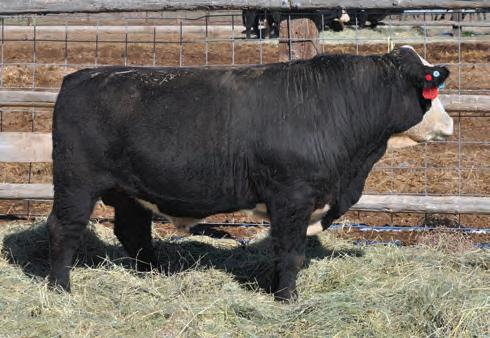
My favorite of all the 2022 bull calves. This boy is 8 pounds of sugar in a 5 pound package.
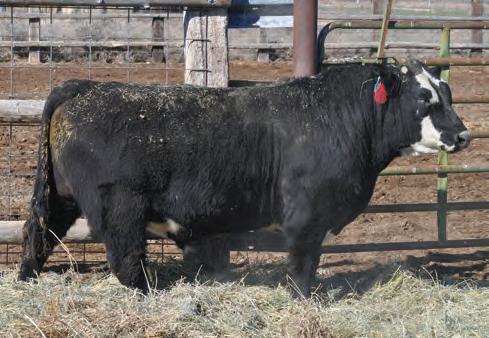
3/12/22 3/4 AN 1/4 BM

Dark, cherry red bull sired by our 2020 born bull, J6 Rangemaster 878, that sold to Lou & Teresa Andersen for $5,000. This bull is better than his dad, if you need around 100 head of cows serviced this summer, this is your guy. Dam goes back to pathfinder Angus bull, New Design 878, who sired over 80,000 head of calves over his lifetime of sales with ABS.

3/24/22 1/2 AN 1/4 SM 1/4 BM
J6 RANGEMASTER 414 X EVANS BEEFMASTER
J6 414
This panda-bear colored bull is almost a replica of the bull Quirt Pugsley bought on our 2022 sale. Not sure how to make this bull much better. His progeny will be phenomenal, female progeny will make excellent cows.
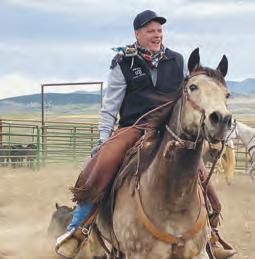

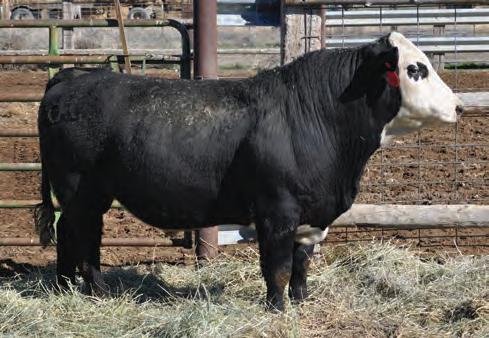


“I have been purchasing bulls from out-of-state breeders over the past 10 years and this will be my fourth year purchasing bulls from Roche Ranches. The bulls that Roche Ranches are producing continue to exceed expectations each year in quality and value. Roche bulls are high caliber specimens that have helped improve my herd’s breed-back numbers and continue to yield the high quality calves that sellers are looking for. I am a believer in supporting fellow local businesses and look forward to the years ahead doing business with the Roche family.”



Calving ease, combined with unmatched fleshing ability on grass. Superior carcass quality. Dam produced into her teens. Daughter by Roberts will be unsurpassed for longevity and fertility.
Thud! The sound this bull would make falling off a 5 ft. ladder. You will see why come sale day. Bull has a very heavy muscled build in a mostly Simmental package. He will be a sale favorite.
All black and good, like black history month. The South Poll breed is making waves across the country for their fertility, longevity and moderate frames packed with muscle. This bull can be used on heifers. Bull’s dam goes back to the famous J6 Ribeye 123.
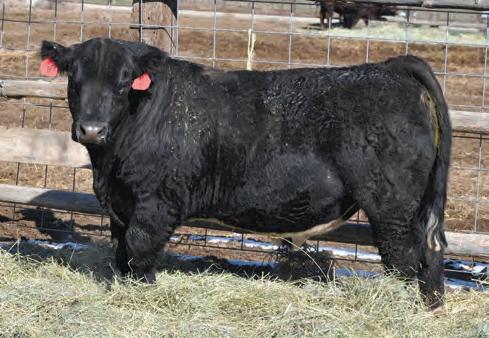
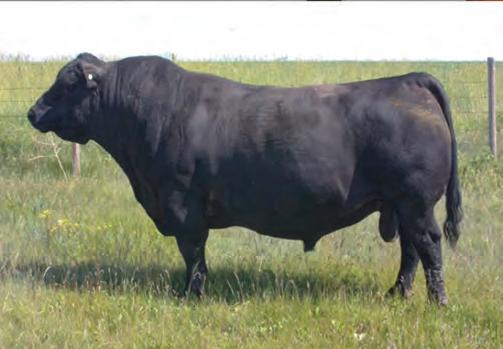
DOB: 2/1/2002 Angus AAA# 14257843
D H D TRAVELER 6807
O C C EMBLAZON 854E DIXIE ERICA OF C H 1019
SHOSHONE 130-6357
D D A MELISA 824
D D A MELISA 545
DDA Emblazon 27C has been put to the test all across the U.S., Canada, Australia and South America. He may be the thickest, easiest fleshing bull we have ever seen and he does it on 100% forage. DDA Emblazon 27C is a five frame bull, weighing 2,300 lbs. after the breeding season. Average birth weight on 148 bull calves is 79 lbs. and on 124 heifer calves is 75 lbs. Phenotypically, this bull is very correct with great feet and legs.



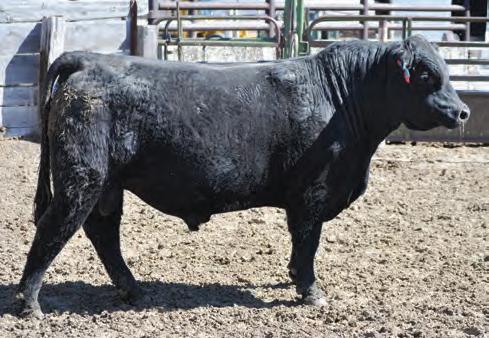

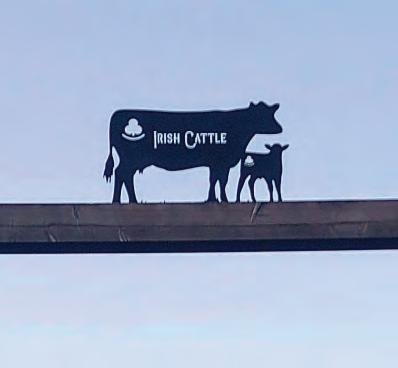

Paternal brother to lots 9-11. All black bull with just a 1/4 shot of Hereford. The best Hereford is always a black one! BW

Almost replicated in type and pedigree to lot 10.

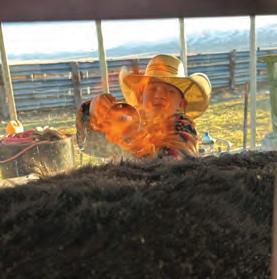
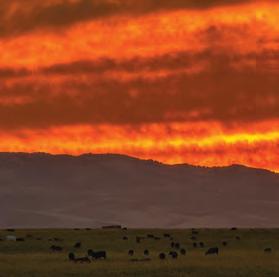



With nearly identical growth levels to his sire, he offers enhanced Calving Ease, Rib Eye Area and Beef Value. High accuracy, sure-bet calving ease with solid growth, moderate mature size and outstanding scrotal circumference. Elevated In Focus Genetics. His daughters set him apart from the crowd - they are deep bodied and easy fleshing with fault free structure and udder quality.


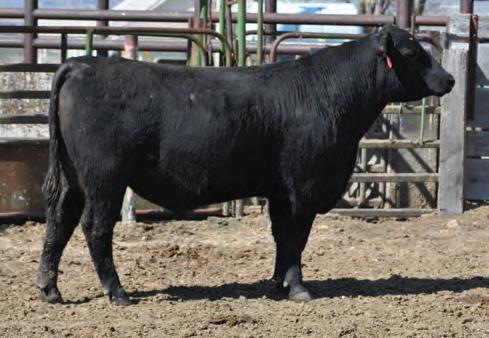
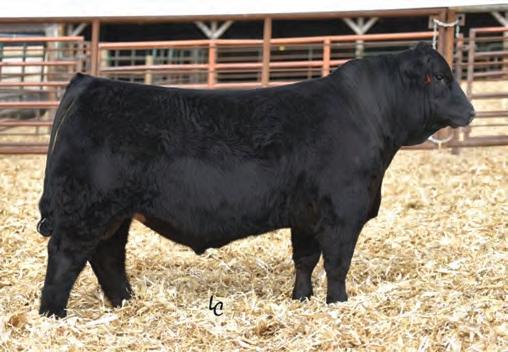
DOB: 2/27/2014 PB SIMMENTAL ASA# 2854454
GW PREMIUM BEEF 021TS
GW-WBF SUBSTANCE 820Y
GW MISS MATERNAL 558P
DIKEMANS SURE BET HOOK`S SARITA 92Y
HOOKS SARITA 4S
Baltic is among the cleanest and most attractive of all the great Substance sons sold in the 2015 Bred for Balance sale. EPD spread, balanced value, depth of body, stoutness, wonderful structure and great disposition are just a few of the reasons this group was so popular and why Baltic is so good. His top 1% value for Yearling Weight improvement couples well with a sire also predicted to be in the top 20% for calving ease.



HOOKS BALTIC X SUBSTANCE J6 972 X GOLDMINE
Paternal brother to lot 14, with a little less frame and performance. Lot 16 boasts one of the best dams of the sale. J6 972 is a sweet, deep bodied and big topped cow, tipping the scales at approximately 1,200 lbs. Maternally oriented cow maker in Lot 16.
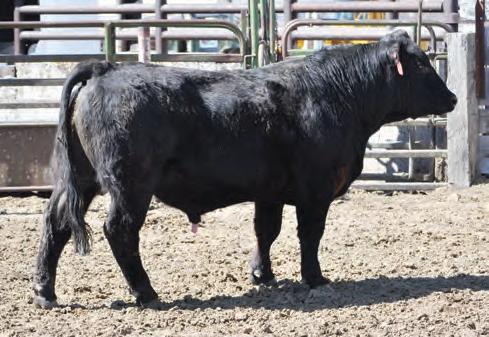
ROBERTS X BENT TREE
J6 9021 X J6 579 X MACHO
Another all black, polled, stout calving ease bull. Very similar to paternal brother in Lot 7. This guy is attractive and will turn some heads come sale day.

ROBERTS X BENT TREE J6 940 X CHARLO

Heifer safe, with a really good Coleman Charlo mother that is maintaining a 103 weaning ratio on 4 calves.
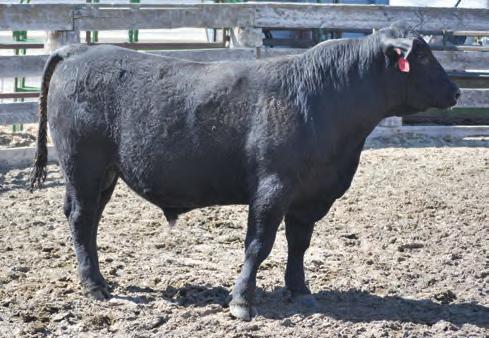

If you’ve come to buy one of the truly great bulls of the sale, do not have your finger up your butt when this stud sales. Would like to retain the right to collect this bull one time, at new owners convenience, and our expense. Female maker! I do not know how you could put more natural muscle and rear end in a bull while maintaining an extremly soft made look.

43 cm. Scrotal on this polled, BWF bull, with just a tick of Beefmaster. Lots 23-25 are all paternal brothers, their dams all paternal sisters and 1/2 blood Beefmasters. For ranching in the dry arid west, I’m not sure you could use better genetically based bulls than these 1/4 BM. If you don’t get lot 23, this bull isn’t far behind him.


The most calving ease of the three paternal brothers. Lot 25 is slick haired, and scurred. This bull will handle a tremendous workload. Bull has more libido than Bill Clinton on Epstein Island.
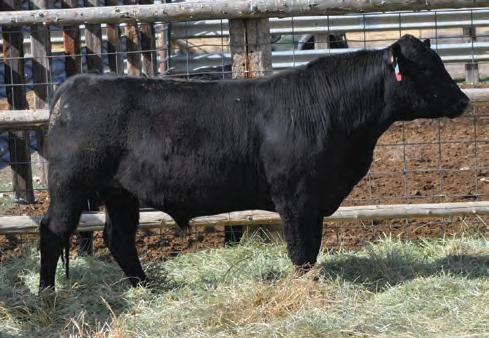


BECKTON NEBULA M045
BECKTON NEBULA P P707
BECKTON LANA M809 EP
LJC MISSION STATEMENT P27
JYJ MS JOLENE W16
HXC JOLENE R548
This bull is as solid as they come both on paper and phenotypically speaking. Redemption is a household name in all aspects of the cattle industry. Whether for calving ease in heifers, moderate cow size or reeling in a herd’s inputs, or in elite donor nucleus programs, Redemption is still your go-to sire. He offers instant name recognition and calving ease for heifers and is ideal for putting downward pressure on feed inputs.
Lots 23-29 are all sired by bulls that were born and raised on our place, I think that says a lot about what we think about our own bulls. The proof is in the pudding on this dude, you will drive a lot of miles to find a bull phenotypically more pleasing than him. You will definetely want to find this bull April 13th.

Lots 26-29 are paternal brothers by our straight black and polled herd sire, J6 Redemption, by Brown Redemption. Lot 27 has a pale face and is structurally very correct. Dam is a good Simmental X cow with a maternal index in the top 15% of the Simmental breed with a REA EPD in the top 5%.
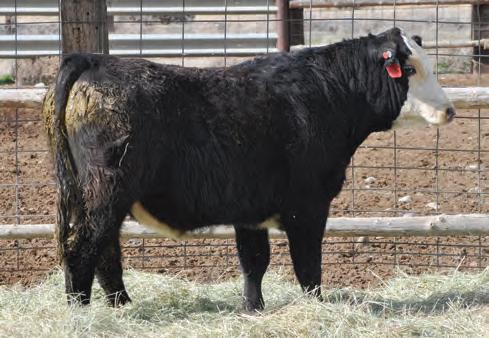
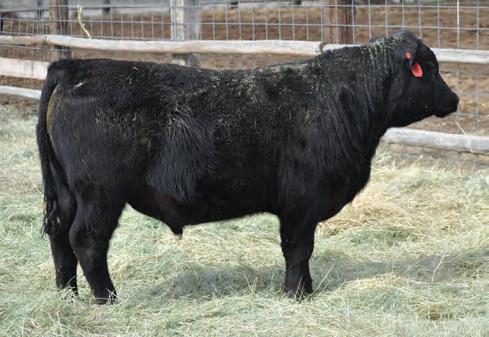

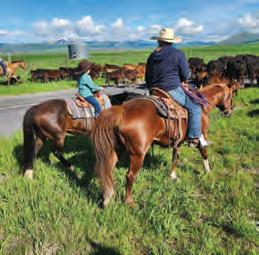
“Roche Bulls have increased our profitability, and we buy them because they are moderately framed, have great calving ease, good growth, and are pleasant to work with. We really like their genetics, and the Angus cross bulls are our favorite. “
- Jason Hatch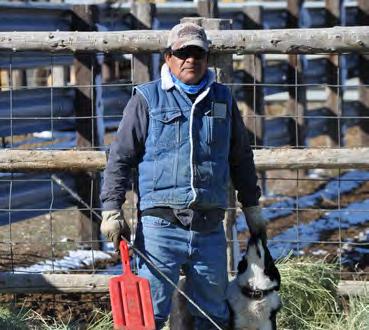

Lot 29 is something really special. His dam, J6 123, raised the top selling bull in our 2013 sale: J6 Ribeye 123. He sold to Lou and Teresa Andersen for $8,000, then we bought him back and used him for several years. We literally have over 100 head of Ribeye offspring in our herd. This bull’s dam is still going strong at 13-yearsold, weaning 11 calves at 101 weaning ratio. Lot 29 is straight red and hurt his shoulder this fall. Hopefully he is 100% come sale day.
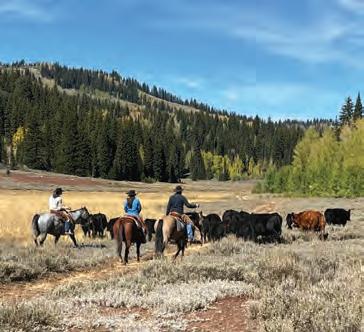

A

A



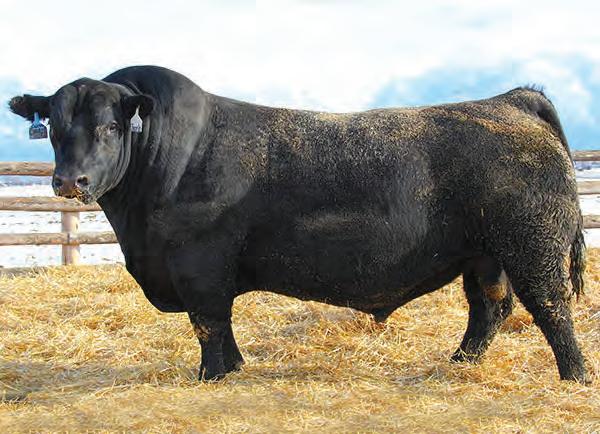
DOB: 8/11/2010 Angus AAA# 16879074
O C C FOCUS 813F
O C C PAXTON 730P
O C C BLACKBIRD 736K
SITZ TRAVELER 8180
BOHI ABIGALE 6014
S A V ABIGALE 6062
Charlo has worked very well in commercial heifer projects, with reports of calving easily, and explosive growth on the calves. Charlo’s calves look a lot like him, very wide-based, big-topped, lots of muscle expression and long-sided. Charlo is very long, has a big foot, walks like a cat and has a lot of depth and width to him. His flush sisters in production have beautiful udders, extremely easy fleshing, and like Charlo, are very wide-based and deep-sided.

A Charlo sired bull, backed by an outstanding, moderate framed, Hoover Dam daughter. If your after a bull that will sire an excellent set of 1,100 lb. cows, this is your bull. Bull will be excellent on heifers. Maternal index is also in the top 10% of Angus breed.

The last of the South Poll sired, long yearlings. This bull is backed by a long line of PB Angus cows, with low BW and early gestation genetics. Might be the best all-around heifer bull of the sale.
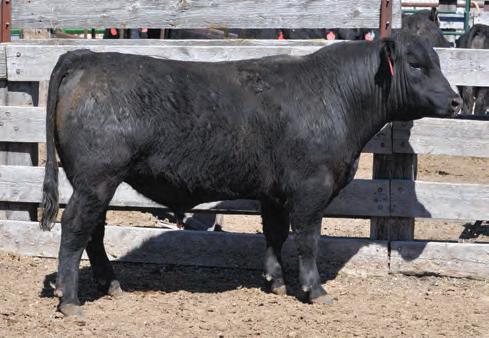

DOB: 1/9/2016 Angus AAA# 18578963
O C C PAXTON 730 P
COLEMAN CHARLO 0256
BOHI ABIGALE 6014
S A V TRAVELER 004
S A V BLACKCAP MAY 4136
S A V MAY 2397
Rainfall sires added length, soundness and unmistakable herd bull presence in his sons. His daughters are stunning in an elegant maternal package. Rainfall sets himself apart with his dominating hip and rear-leg structure with muscle shape and flawless phenotype. He brings calving ease, maternal strength and performance together.

4/2/22
BW 0.8 WW 54 YW 105 Milk 22 Gain 3.1
Lots 35-60 represent one of the largest sets of Rainfall sired bulls to sell in the West. Rainfall calves easy, has adequate growth for our environment, moderate mature size and positive energy. These rainfall sons are heifer safe. They were born and raised on the Nevada desert, where their mothers recieved zero hay, all winter long, zero assistance at calving, and hustled all summer long on 60k acres. These bulls summered as high as 8,500’ in elevation and know how to travel in the rocks. They were weaned in October on a grass pivot where they grazed until the January. They were developed on grass with a small amount of a bull grower pellet from IFA.

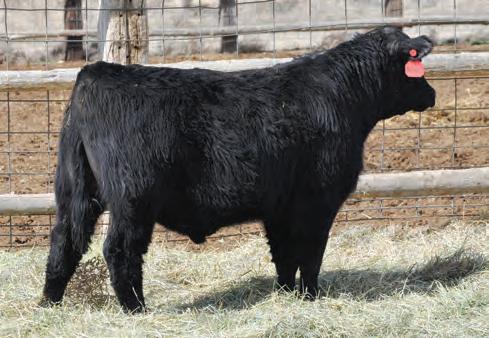
One of the top Rainfall sons offered, with a big scrotal which will translate into fertile, productive, females. Most of us raise our own replacements, so we need to pay more attention to the cattle we retain. Focus on maternal traits should be priority one for those of us who raise our own heifers.

A little lighter weaning weight, but dam was 13-years-old when she weaned this calf.
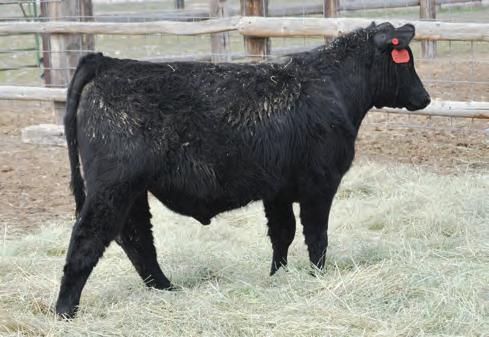
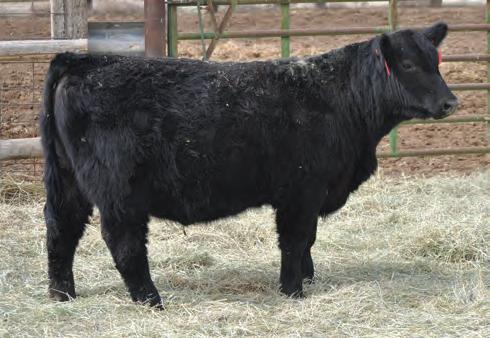
Very similar in pedigree and phenotype to the previous lot, two of my favorites in lots 38 & 39. Very impressive scrotal as well in these Rainfall sired calves.




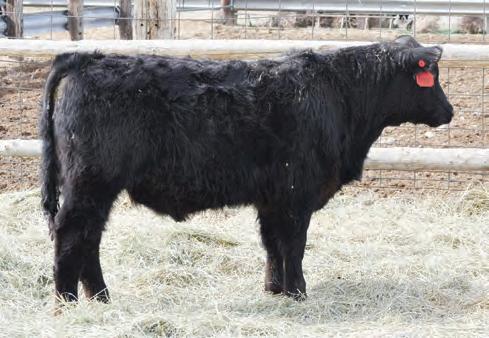




4/11/22 PUREBRED ANGUS 46
S A V RAINFALL X COLEMAN CHARLO J6 9002
Rainfall will sire moderate framed cattle in the daughters retained, and excellent performance for those who sell their calves at weaning. They will then go on to perform for the feeder and the packer. Thank God they will make money for the packer, as they are always very concerned if we are profitable.
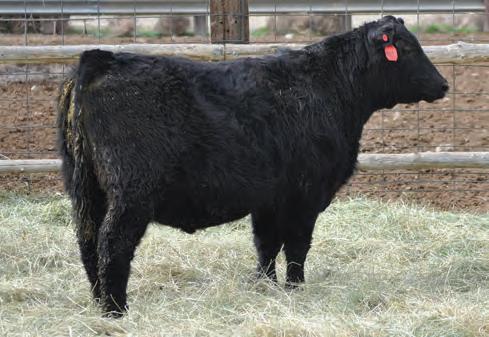
4/7/22 PUREBRED ANGUS 47
S A V RAINFALL X COLEMAN CHARLO J6 779
Blake Morgan bought a paternal brother for $5,250. BW

4/11/22 PUREBRED ANGUS

Dam of lot 52 has a weaning ratio of over 104 on six head with all three of her heifer progeny being retained in herd.

Grandam stems from Van Dyke Angus in Montana. Dam herself is a 2009 model and has weaned 13 calves with an average weaning weight ratio of 105.

Another desert-raised Rainfall son that my brother brought off the tip top of Clear Creek Canyon at about 8,500 ft elevation, in a pile of rocks. You simply cannot beat these high desert raised cattle for durability.


Huge scrotal for a bull that was only 11 months old at testing.


1/4 blood Simmental with a 14-year-old mother. Maternal genetics at their best. Fertility and longevity are 8-10 times more profitable than growth and carcass.
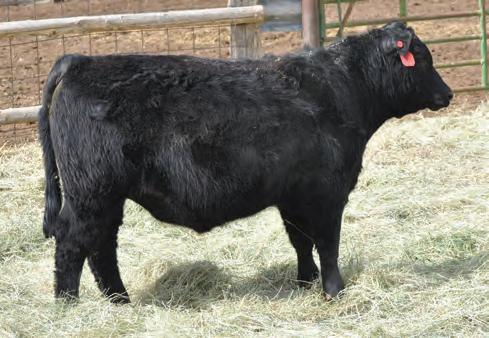
Rainfall sired catle will be optimum for growth and performance for this part of the world. If you retain ownership on some of your cattle Rainmaker has very good numbers and EPDs for carcass performance.

The only Rainfall out of a first calf heifer. This bull is really good, and will only get better with time. If you’re after a really good BWF half Hereford, don’t hesitate on this bull.
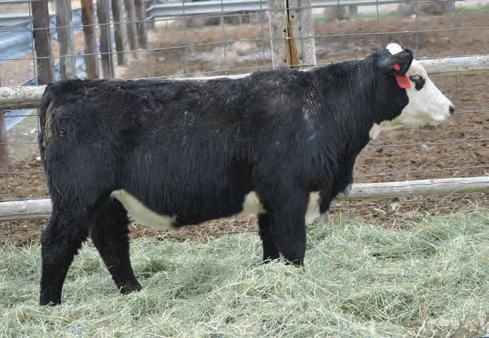

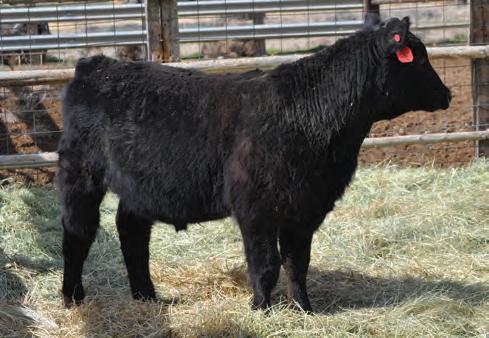


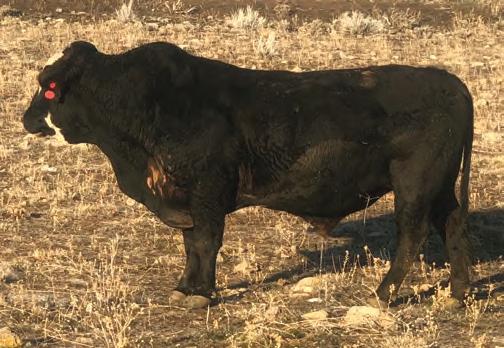

LASATER BULL
LASATER COW
This bull will be 6-years-old this spring, and is sound as a cat. Stemming from the Lasater herd that is world-famous for producing fertile, long lived cows.
A really good, 1/2 blooded, Beefmaster, with a little bit of color. On a set of mostly black or red cows, you will never notice his color. If this bull wasn’t so good, and his dam wasn’t one of our best cows, I would have cut this bull based on his color alone. He should really sire a nice set of feeder calves and excellent replacement heifers.



Youngest bull of the sale, with a 36 scrotal at 10 months of age. This bull is going to be really good, just give him some time. This bull has a super disposition and a well muscled, deep bodied phenotype.
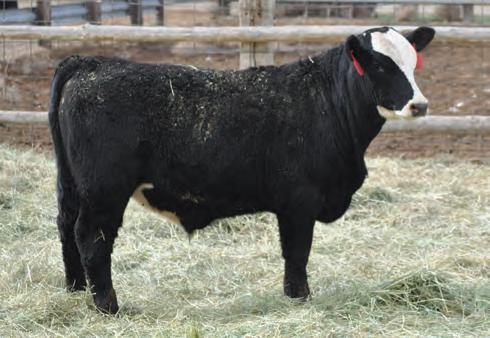
Highest performing bull of the sale. Beefmaster genetics will add performance to your cattle. This bull is solid black and full of muscle.

Maybe the best bull of the sale here in lot 66. Bull shows very little Beefmaster influence and his dam, by Redemption, is one of the best cows that walk our place in Nevada. This bull is worth staying till the end of the sale for.


4/5/22 1/2 BM 1/4 CHAR 1/4 SM
J6 EVANS X EVANS RANGEMASTER
J6 011 X BIG BEN
A bull for someone who raises smokey, Charolais X calves. This bull will sire a really nice set of calves alongside your Charolais bulls. His dam is an own daughter of Big Ben. We sold several Big Ben sons a couple of years ago to Shamus Haws and Lloyd Miner and they have gotten along really good with them. Big Ben is a Charolais bull owned by ABS.
3/20/22 1/2 BM 1/2 AN
J6 EVANS X EVANS RANGEMASTER J6 717
This bull should have been put right after lot 65, they are very similar, except for lot 70 is cleaner sheathed. Exceptional bull to put on predominatly Angus cows to add heterosis. BW
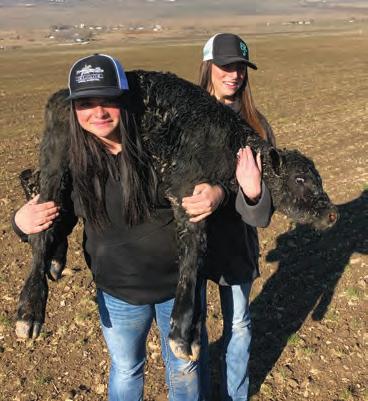
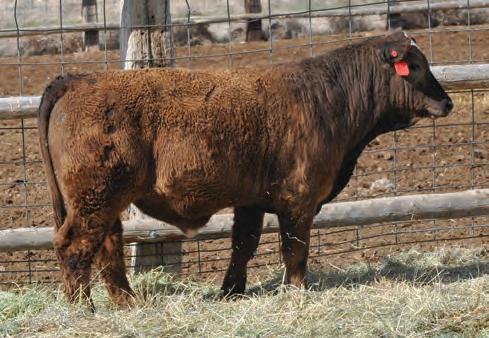










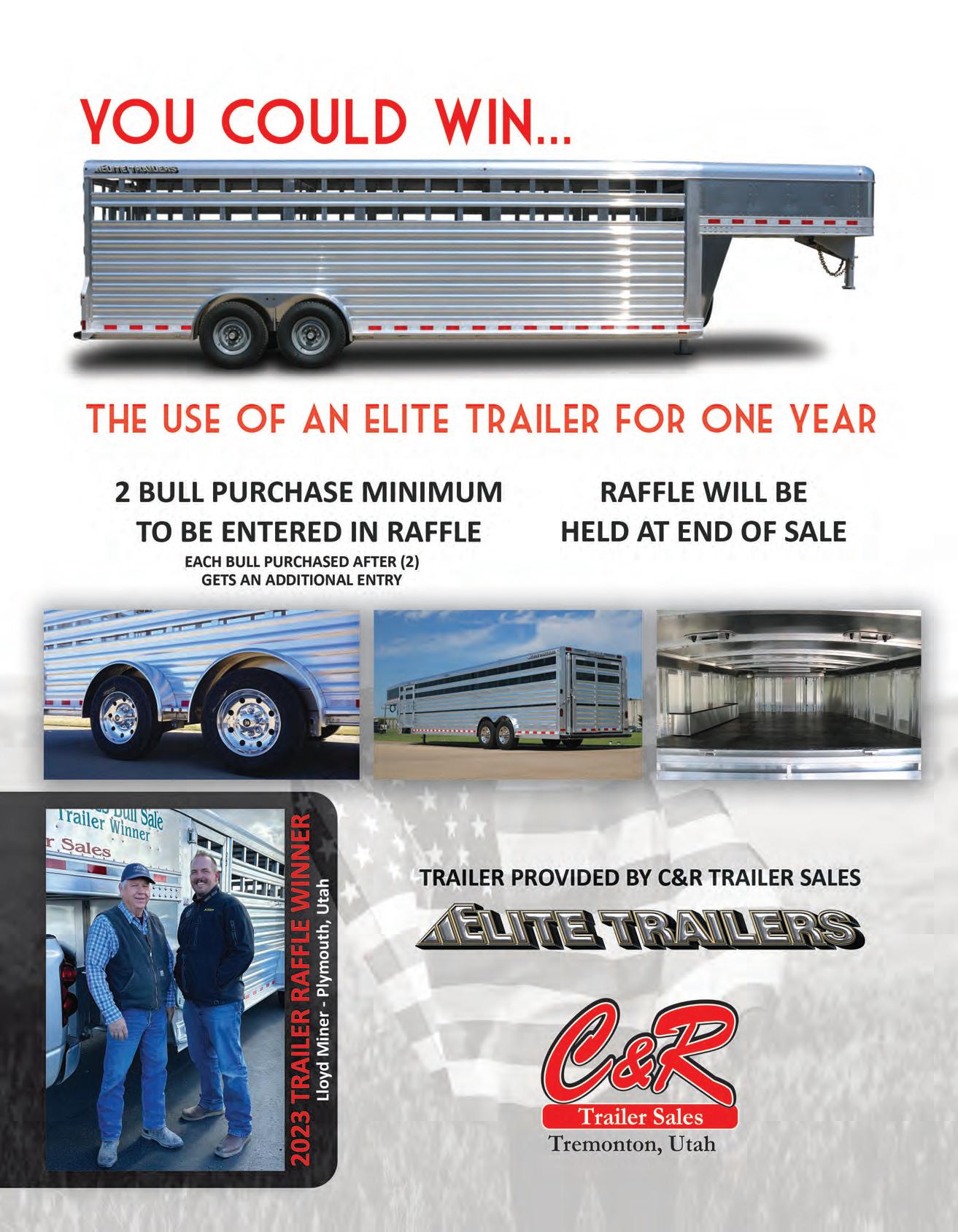


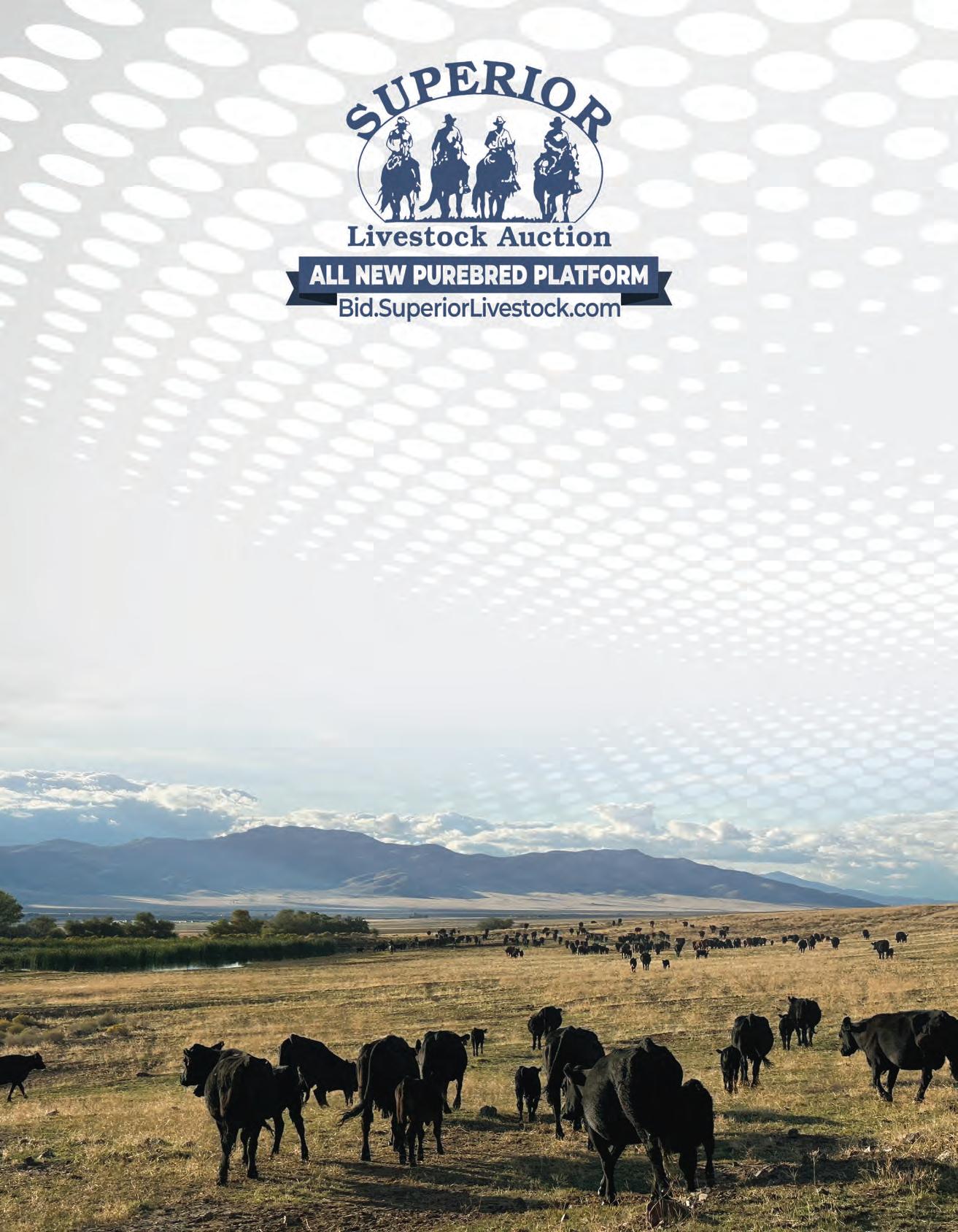
The auction will be broadcast online at Bid.SuperiorLivestock.com and the pre-recorded videos will also be hosted there prior to and on sale day. You do not need an account or login just to watch the auction.
Go to Bid.SuperiorLivestock.com for Superior’s new online bidding platform. If you have not registered there before you will need to create an account if you wish to bid (there is no registration required just to watch the auction). Once you have created an account, request a buyer number and you will then be able to bid online with the largest and most trusted cattle marketing entity in North America. Superior’s new platform allows you to see both the live stream of the auction AND the pre-recorded videos on one screen at the same time!
This is Superior’s suggested bidding method for anybody who does not have consistent, high-speed internet. You still must register an account at Bid.SuperiorLivestock.com and request a buyer number and upon doing so you will see the bid line phone number. Just watch the auction online and call in at least 2 lots ahead of the lot you are looking to bid on.
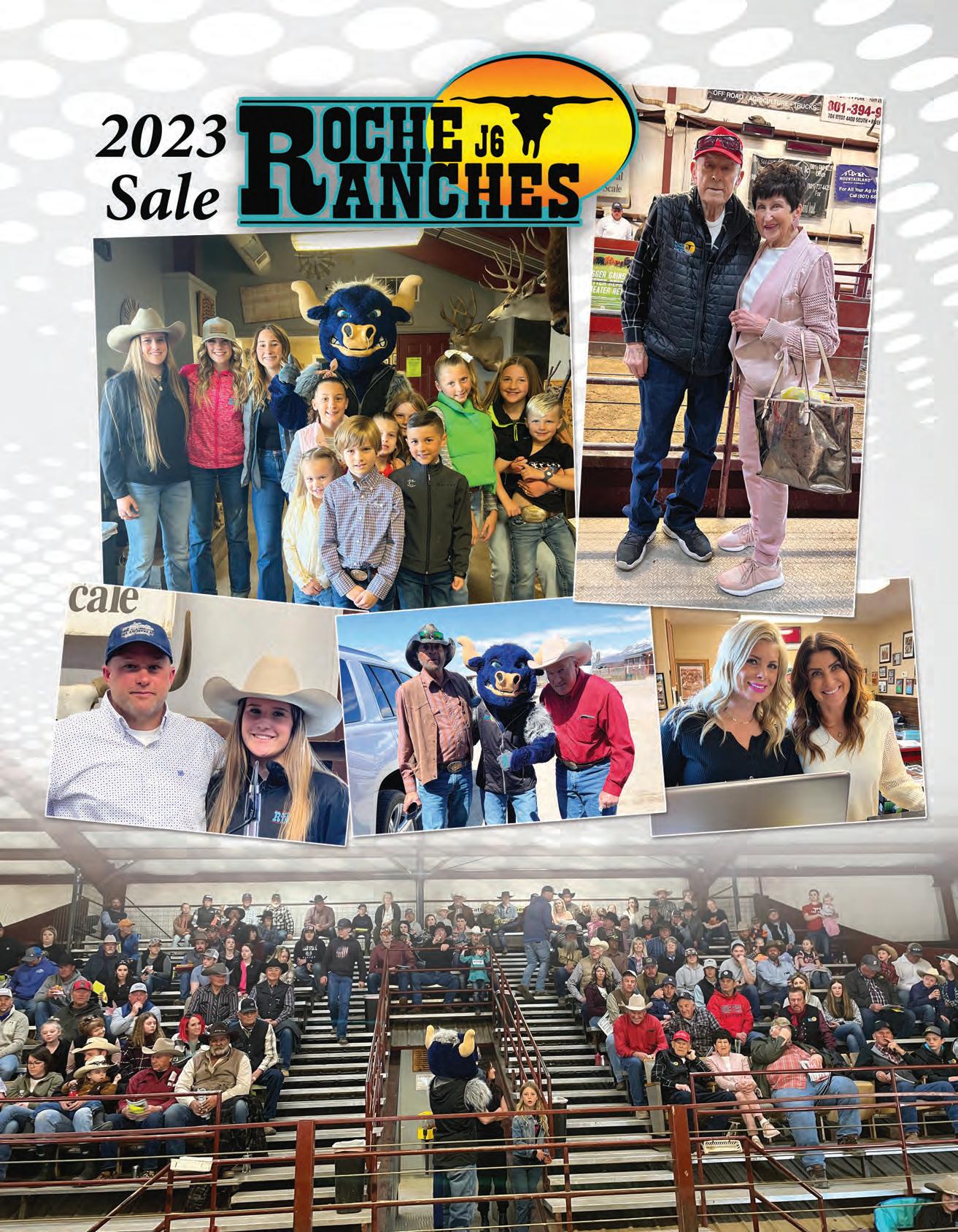















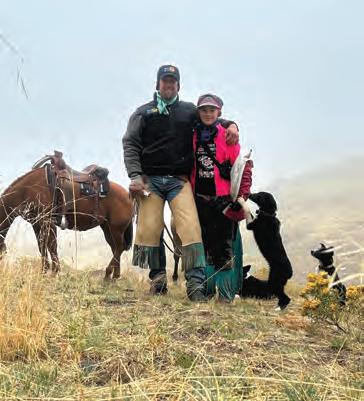
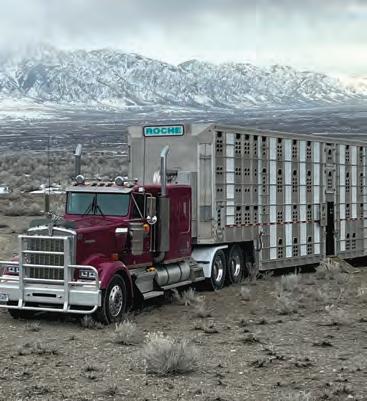


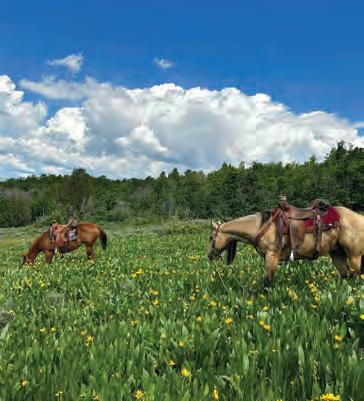



EPD - Expected Progeny Difference - The expected difference in performance of a bull’s progeny compared to the performance of another sire’s progeny. In other words, EPDs for one animal are meaningless until they are compared to EPDs of another animal. For example, if Sire A has a birth weight EPD of 4.0 and Sire B has a birth weight EPD of -2.0, then calves from Sire B would be expected to average 6 pounds lighter at birth than calves from Sire A if the bulls are randomly mated in the same herd. EPDs are designed to compare sires within the same breed. Acc. - Accuracy - A measure of reliability of an EPD expressed between 0 and 1.0. Accuracies closer to 1.0 means the EPD is a more reliable estimate of a sire’s true genetic value for the trait.
% Rank - Based on percentages, this indicates where a bull’s EPD ranks him in the entire population of his respective breed.
CED or CE - Calving Ease Direct is the difference in percentage of unassisted births when a sire is bred to first calf heifers. A higher number is desirable.
BW - Birth Weight EPD predicts the difference in average birth weight of a bull’s calves compared to calves of another bull. Reported in pounds, a lower number is desirable.
WW - Weaning Weight EPD predicts the difference in average 205-day weight of a bull’s progeny compared to calves of another bull. Reported in pounds, a higher number is desirable.
YW - Yearling Weight EPD predicts the difference in average 365-day weight of a bull’s progeny compared to progeny of another bull. Reported in pounds, a higher number is generally desirable.
YH - Yearling Height (Angus) - The YH EPD predicts the difference in yearling hip height of a bull’s progeny compared to progeny of another bull. Reported in inches, ideal values vary depending on production environment.
SC - Scrotal Circumference - The SC EPD predicts the difference in yearling scrotal circumference of a bull’s male progeny compared to progeny of another bull. Reported in centimeters, a larger number is desirable.
CEM or MCE - Calving Ease Maternal is expressed as a difference in percentage of unassisted births of a sire’s daughters as first-calf heifers when compared to daughters of other sires. Reported as a percentage, a higher value is desirable.
Milk - The Milk EPD predicts the difference in average 205-day weight of a bull’s daughters’ calves compared to the calves from daughters of another bull. Reported in pounds, ideal milk values depend heavily upon the nutritional environment of the herd.
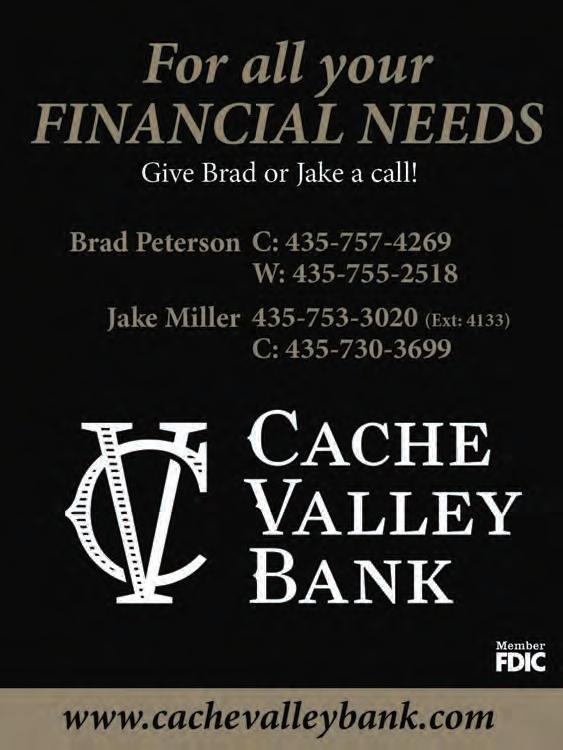
MWW - Maternal Weaning Weight (Simmental)
M&G - Milk and Growth (Hereford)
TM - Total Maternal (Red Angus)
The EPD predicts the Weaning Weight of a bull’s daughters’ progeny and reflects both the milking ability of a bull’s daughters and the growth potential of their calves. Reported in pounds, higher numbers are generally desirable.
$EN - Cow Energy Value (Angus), expressed in dollars saved per cow per year, the EPD assesses differences in cow energy requirements for daughters of sires. A larger value is more favorable when comparing two animals (more dollars saved on feed energy expenses). $EN savings differences account for lactation energy requirements and mature size of cows.
Stay - Stayability (Red Angus & Simmental) - The stayability EPD predicts the probability of a bull’s daughters staying in production to at least six years of age compared to daughters of another bull. Reported as a percentage, a higher value is desirable.
Carcass Traits – EPDs for carcass traits are calculated using weighted averages of yearling ultrasounds and progeny carcass data.
CW - Carcass Weight - The EPD predicts the difference in hot carcass weight of a bull’s progeny compared to progeny of all other bulls evaluated at a given endpoint. Reported in pounds, a higher number is generally desirable.
Marb - Marbling - The EPD predicts the difference in average USDA marbling score of a bull’s progeny compared to progeny of another bull at a similar end point. Reported in degrees of a marbling score, higher values are desirable.
REA - Ribeye Area - The EPD predicts the difference in ribeye area of a bull’s progeny compared to the progeny of another bull and is an indicator of total muscle in the carcass. Reported in square inches, larger numbers are generally desirable.
Fat - The EPD predicts the difference in fat thickness of carcasses, measured between the 12th and 13th ribs, of a bull’s progeny compared to progeny of another bull. Reported in inches, lower values are desirable.
YG - Yield Grade (Simmental) – The EPD predicts differences in USDA Yield Grade of a bull’s progeny compared to progeny of another bull. Reported in tenths of a USDA YG, lower numbers are desirable.
$Value Indexes (Angus)
Weaned Calf Value ($W), an index value expressed in dollars per head, is the expected difference in value of a bull’s progeny at weaning compared to progeny of another sire. $W accounts for differences in birth weight, weaning weight direct, maternal milk, and mature cow size. Feedlot Value ($F), an index value expressed in dollars per head, is the expected difference in value of a bull’s progeny for postweaning feedlot performance compared to progeny of another sire.
Grid Value ($G), an index value expressed in dollars per head, is the expected difference in value of a bull’s progeny when sold on a carcass grid basis compared to progeny of another sire.
Beef Value ($B), an index value expressed in dollars per head, is the expected difference in value of a bull’s progeny for postweaning growth performance and carcass value compared to progeny of another sire.
Indexes (Simmental)
All-Purpose Index (API), expressed in net dollars returned per cow exposed, evaluates Simmental sires being used on the entire cowherd (bred to both Angus first-calf heifers and mature cows) with a portion of the daughters retained for breeding and the steers and remaining heifers fed and sold on a carcass grade and yield basis. With the exception of shear force (tenderness), all EPDs are considered in this index.
Terminal Index (TI), expressed in net dollars returned per cow exposed, evaluates the merit of sires when bred to mature Angus cows and all progeny are fed and sold on a carcass grade and yield basis. Consequently, maternal traits such as milk, stayability and MCE are not considered in this index.
$Value Indexes (Shorthorn)
$ CEZ – ($ Calving Ease) This index assumes a bull will only be mated to heifers, not cows. The potential profitability of the sire is measured by the incidence of live calves at birth. Moderate mature size is also emphasized in the index., but performance is not a priority. This index is also a good measure of Shorthorn females’ ability to produce calving ease sires. Overemphasis of $CEZ may cause unwanted depression of weaning and yearling performance.
$F – ($ Feedlot) Similar to a Terminal Sire scenario, $Feedlot places strong emphasis on growth and carcass traits. This multi-trait index assumes the sire will be mated to a mix of heifers and cows and attempts to measure profitability when progeny are sold on the fed market. On the female side, mature size should be monitored closely when selecting for $F. Over-selection may cause detrimental harm to longevity, reproductive efficiency and fleshing ability. $BMI – ($ British Maternal Index) As the name implies, this multi-trait selection index attempts to measure a bull’s potential profitability when complimenting the British cow base (Angus, Red Angus, Hereford, etc.). Shorthorn females can likewise be gauged at adding value to British or British-composite bulls of other breeds. A balance of growth and carcass traits is desired with a strong maternal component aimed at optimum reproductive efficiency and cow longevity.
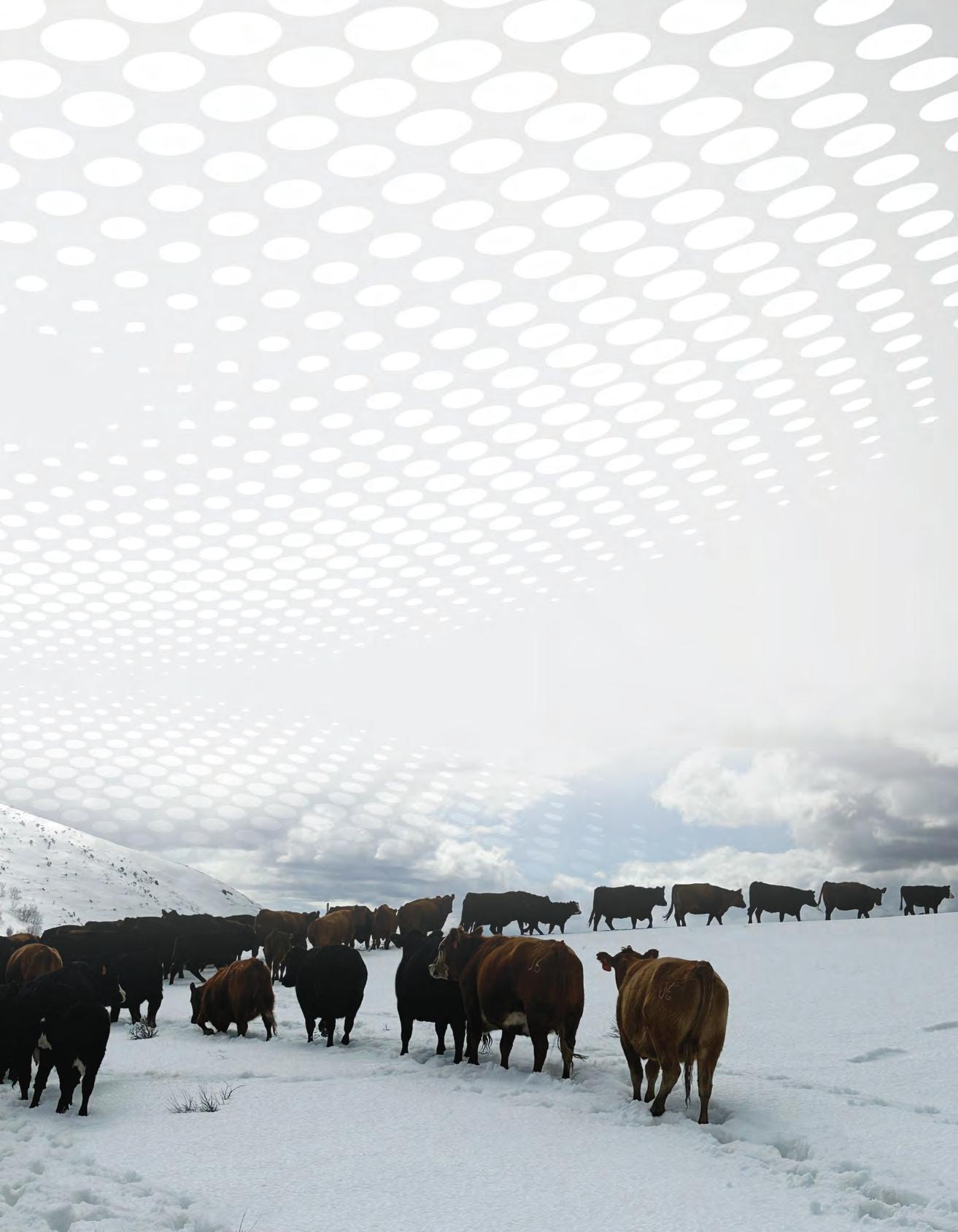
Thanks for joining us! See you next year on April 12, 2025 for the 21st Annual Roche Ranches Bull Sale

